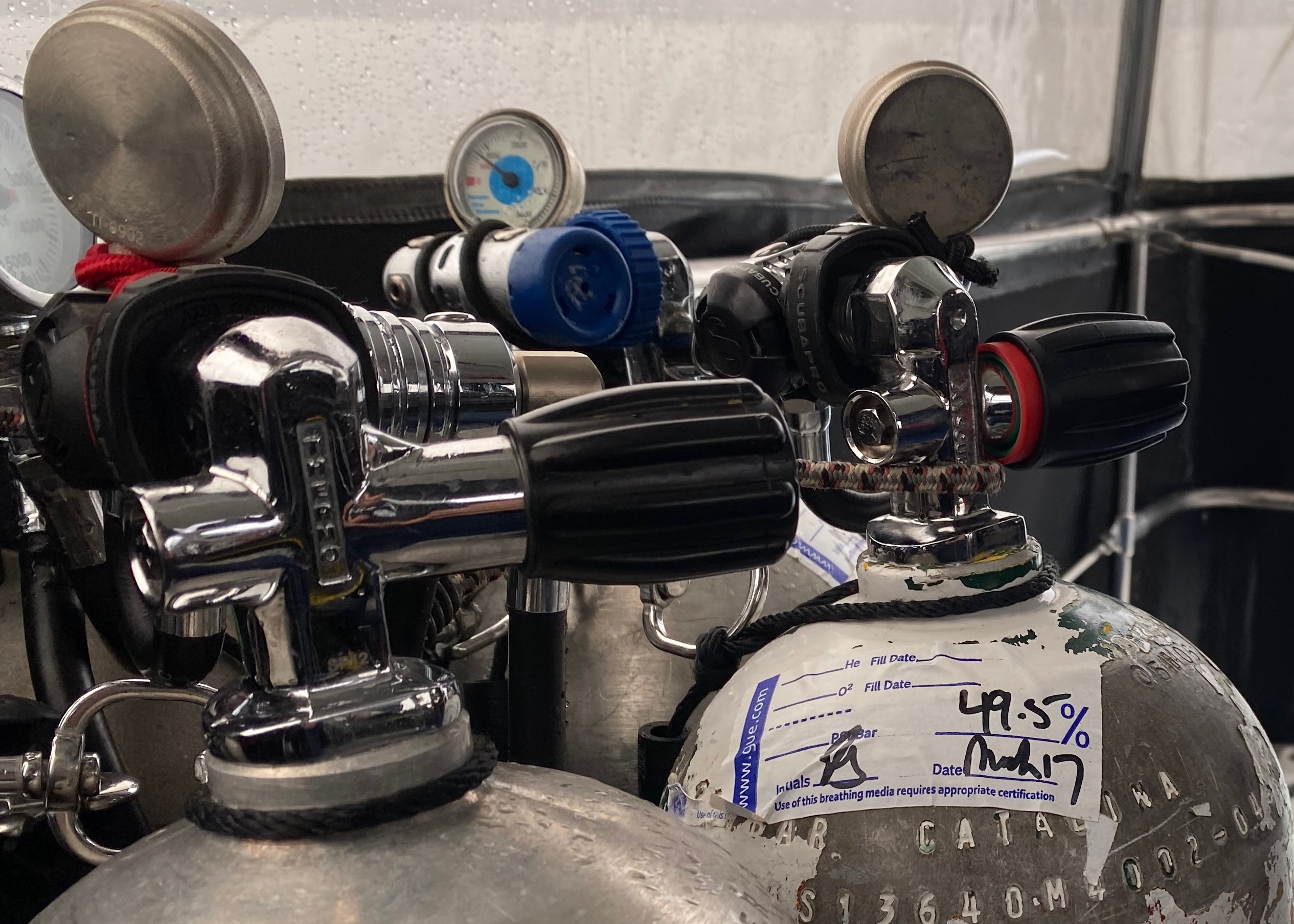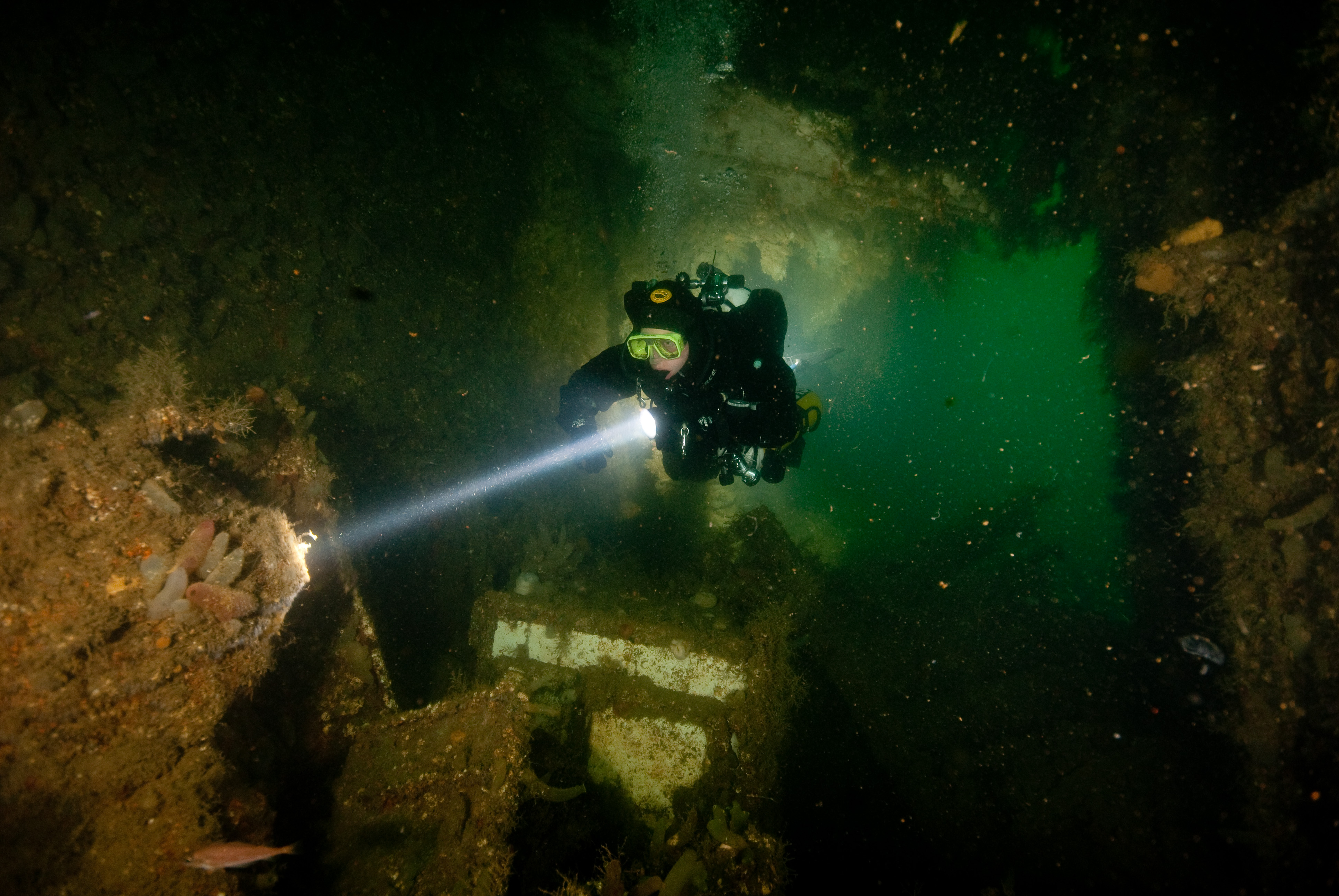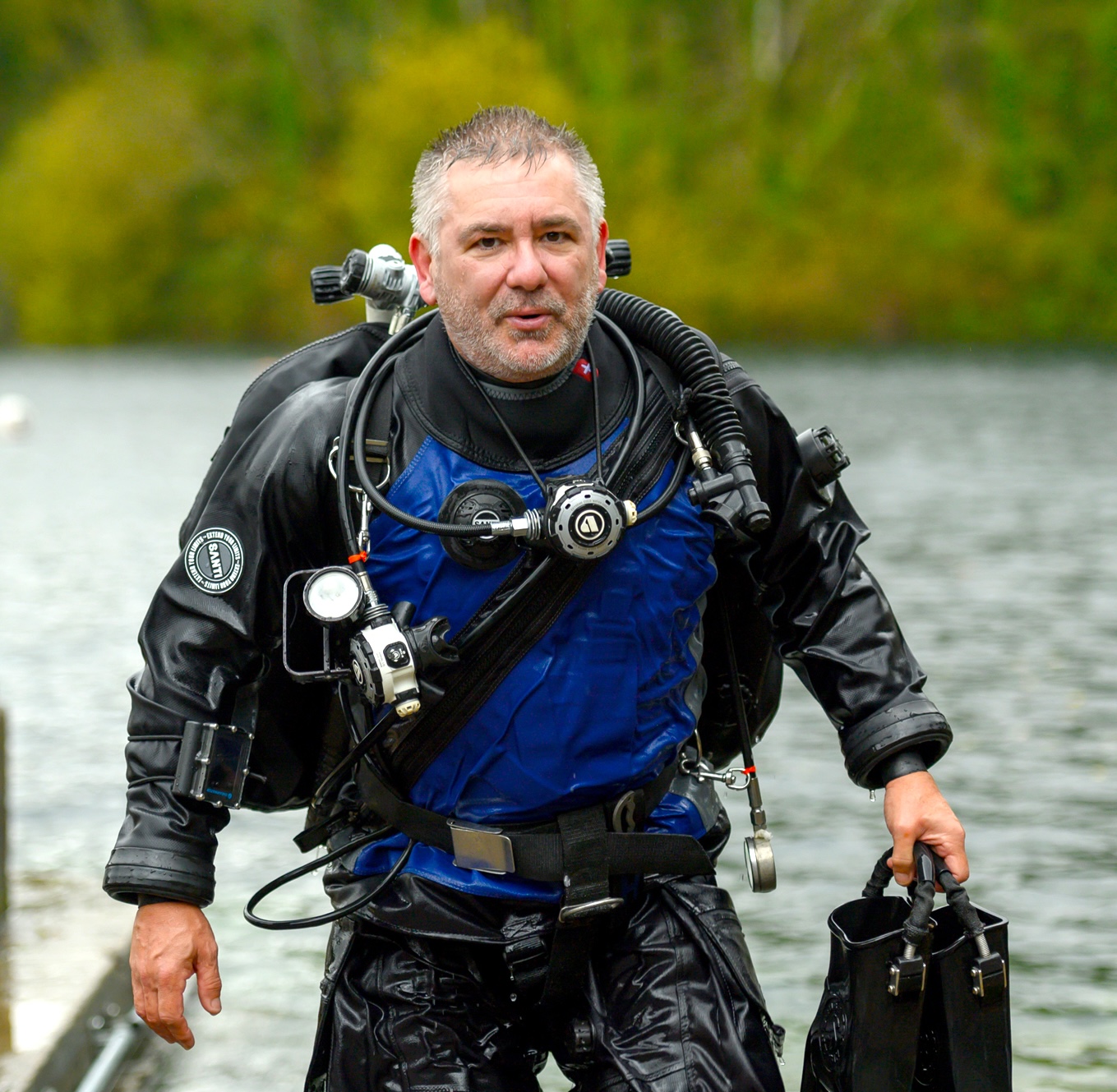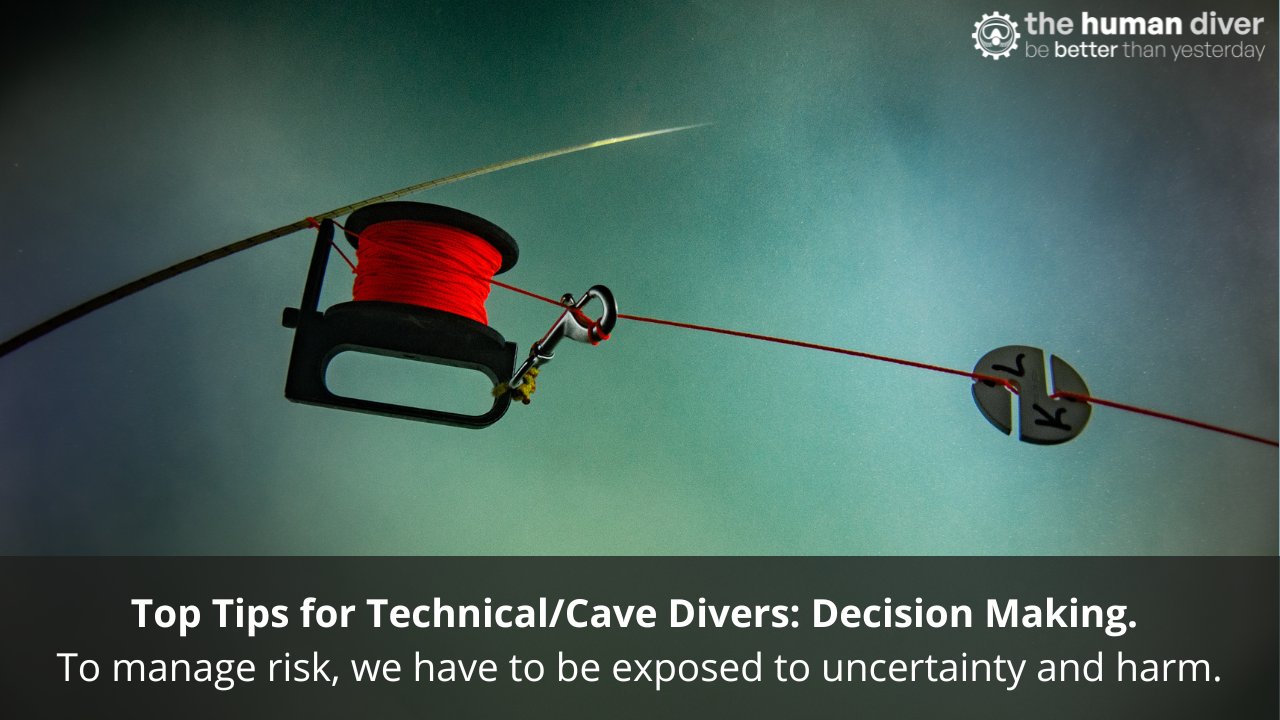
Top Tips for Technical/Cave Divers: Communication.
Oct 08, 2025Story 1:
Two cave/tech divers mislabelled each other’s stage cylinders the night before the dive. Because of distraction, back-to-back analysing and labelling, the bottle marked “EAN32 travel” actually contained EAN50, and the one marked “EAN50 deco” contained 32%. Underwater, they executed their plan, assuming the labels were correct. By sheer luck, they avoided breathing EAN50 down to 30 m, an exposure that could have pushed the pO2 to ~2.0 - the lucky situation was because of a shallower switch than planned. Post-trip testing prior to the next gas fills revealed the swap, leading to a debrief on how the team’s communication and verification protocol failed topside - didn't follow one-bottle-at-a-time rule, there was no cross-check, and over-the-shoulder labeling.

Story 2:
For the first dive of the trip, a three-person team planned a dive at Little River. One of the divers was only certified to the Intro to Cave level, so they agreed to use the Rule of Sixths.
They arranged themselves so the least experienced diver would be in the middle as #2, and the diver with the strongest light would take the rear position as #3. Before entering the water, they ran through a thorough pre-dive sequence—briefing, S-drill, V-drill, and bubble check—helping everyone transition into “cave-dive mode.”
About ten minutes into the dive, diver #3 noticed diver #2’s light flickering erratically against the wall. Looking closer, they saw diver #2 manipulating their right-hand valve, with a steady stream of bubbles escaping.
At that moment, diver #1 was just about to take a 90-degree right turn. Diver #3 realised there was barely a second to get their attention before the team leader disappeared from view. They signalled the emergency light pattern and prepared to donate their long hose to diver #2. Within a few seconds, diver #2 managed to stop the free flow. The team leader returned, assessed the situation, and they collectively decided to call the dive.
Diver #3 noted that diver #2 never signalled for Emergency. His light bounced on the wall due to the valve manipulation, leading to the perception of an emergency. Of note, diver #1 had a good awareness of diver #3's signals. However, had this been a two-person team, there is a good chance #1 would not have seen the signals because #2 was task-loaded with sorting out his valves and wouldn't have noticed the urgency needed to communicate to #1.

The Greatest Illusion of Communication is that it has taken place
We transmit information on a regular basis, and we often assume that just because we have transmitted it, the message has landed and has been understood. Most of the time the listener can infer from the context and situation what the message was about, and they comply. For example, a diver on a stop may indicate to their buddy that the team will ascend to the next stop and stay there for 3 minutes. The buddy only catches the end of the ‘message’, and signals okay because they don’t want to look stupid in front of their teammate. They ascend and stay there until the next message is passed.
Nothing went wrong, so we move on and don’t think about how and why the miscommunication occurred.
In diving, we often assume that communication involves the passing of information between one or more divers using verbal communication or hand signals. However, in both of the stories at the top, we can see that the messages passed didn’t involve verbal communications or hand signals.
Your computer communicates dive and dive plan information to you. Your rebreather controller communicates the status of your breathing loop, and maybe the endurance of the gas supply and scrubber life. The boat captain communicates to the divers using engine revving noises, banging something like a pipe, or setting off a thunderflash!
How do we improve the quality of our communication? The Top Tips!
The following section identifies a number of miscommunication challenges in diving, along with guidance on reducing miscommunication and linking with other elements of human factors in diving. Remember, communication is an enabler for other things to happen. Communication in and of itself doesn’t do much.

Ambiguity in Hand/Light Signals
- Challenge: Hand signals and light signals both have limited vocabulary, and they can be easily misinterpreted and are often context-dependent. A signal that seems obvious to one diver may mean something else to another. In CCR diving, for example, a “problem” signal without a clear follow-up leaves the teammate guessing.
- HF Link: Shared mental models, standardisation vs. adaptation, and confirmation bias. We often assume the other diver interpreted the signal the way we intended, but we don’t verify.
Cognitive Load and Task Saturation
- Challenge: Under stress, divers often miss or misinterpret signals. For example, a diver may not process their buddy’s signals because their cognitive resources are maxed out due to an emergency, CO2 build-out, nitrogen narcosis, or something happening topside that is taking the divers capacity.
- HF Link: Attention, situation awareness, and working memory limits. Communication fails when mental bandwidth is consumed by survival tasks, and the other diver who isn’t stressed doesn’t understand why the message didn’t land.
Assumptions and Unspoken Plans
- Challenge: Teams frequently assume everyone shares the same dive plan, gas strategy, bailout routes, or turn pressures, but don’t actually confirm. This becomes critical in caves where exit paths can differ or in CCR dives where bailout planning must be crystal clear.
- HF Link: Shared mental models, briefings, and the illusion of communication. “I thought you knew what I meant” is a classic HF trap. The use of an effective debrief identifies these gaps post-dive, thereby setting the team up for success the next time.
Hierarchy and Reluctance to Speak Up.
- Challenge: In mixed-experience teams, less experienced divers often fail to voice concerns, even when they notice something wrong (e.g., an instructor forgetting a checklist step or a leader pushing beyond agreed-upon limits). Instructors or senior divers may also dismiss feedback.
- HF Link: Authority gradients, psychological safety, and speaking up. Fear of being wrong or “breaking the flow” prevents communication at exactly the moment it’s needed most.
Environmental & Equipment Constraints
- Challenge: Technical environments amplify the barriers: poor visibility, silt-outs, narcosis, thick gloves, multiple cylinders, task-heavy CCR units, and noisy open circuit bubbles make clear communication harder. Even simple checks like “is my valve open?” become compromised.
- HF Link: Error-producing conditions, human–machine interaction, and resilience. The environment degrades both signal transmission and perception, making redundancy and verification essential.
Confirmation Without Verification
- Challenge: Divers often “see what they expect.” A light flash might be assumed as an acknowledgement or an emergency, even if it was accidental. A head nod underwater could be misread as agreement rather than disorientation or concern. What does ‘normal’ look like for your team?
- HF Link: Confirmation bias, heuristics, and complacency. We fill in gaps rather than explicitly checking. Although assumptions make the world go around at the pace it does, there are times and places for validating assumptions.
Incomplete or Rushed Pre-Dive Briefings
- Challenge: Pre-dive briefings often skip details (“we’ve dived together before, you know the drill”) or assume shared knowledge. But gas cylinder drops, lost line protocols, or deco strategies can differ slightly between divers and lead to confusion under stress.
- HF Link: Planning fallacy, assumption of common ground, and local rationality. Small gaps in planning can become major barriers underwater. The problem is that we judge dives by their outcomes, and without a bad outcome, there isn’t a trigger for a debrief. Without the debrief, the learning opportunity is missed.
Non-Verbal Emotional Leakage
- Challenge: Anxiety, frustration, or overconfidence leak through body language. A stressed diver finning erratically or with poor buoyancy may unintentionally signal “I’ve got a problem”, but teammates might misinterpret it as incompetence or even ignore it. Again, what does ‘normal’ look like.
- HF Link: Non-technical cues, emotional contagiousness, and situation awareness. Team members need to “listen with their eyes.”
Technology Over Trust
- Challenge: Divers often assume computers, HUDs, or checklists “communicate” enough and that they are accurate with their messaging. For example, in CCR, one diver may trust their electronics for PO₂ management and assume their teammate is doing the same, but technology doesn’t replace explicit human confirmation.
- HF Link: Automation bias, human–machine interaction, and trust calibration. Over-reliance on tech reduces essential dialogue between teammates to help build an accurate shared mental model.
Breakdowns in Debriefing and Learning
- Challenge: After the dive, divers often avoid honest conversations about what went wrong, meaning subtle miscommunications are never corrected. Without feedback loops, errors are more likely to repeated until a major event occurs.
- HF Link: Just Culture, psychological safety, and reflection. Communication challenges persist when they aren’t openly discussed and normalised.
Summary
If communication were that easy, we wouldn't miscommunicate on a regular basis. The only way we can check that the message landed with our partners is to close the communication loop. Ask for a 'repeat back' (underwater) or use open questions using the acronym TEDS to help you. (Tell me, Explain to me, Describe to me, and Show me.)

Gareth Lock is the owner of The Human Diver. Along with 12 other instructors, Gareth helps divers and teams improve safety and performance by bringing human factors and just culture into daily practice, so they can be better than yesterday. Through award-winning online and classroom-based learning programmes, we transform how people learn from mistakes, and how they lead, follow and communicate while under pressure. We’ve trained more than 600 people face-to-face and 2500+ online across the globe, and started a movement that encourages curiosity and learning, not judgment and blame.
If you'd like to deepen your diving experience, consider the first step in developing your knowledge and awareness by signing up for free for the HFiD: Essentials class and see what the topic is about. If you're curious and want to get the weekly newsletter, you can sign up here and select 'Newsletter' from the options.
Want to learn more about this article or have questions? Contact us.












